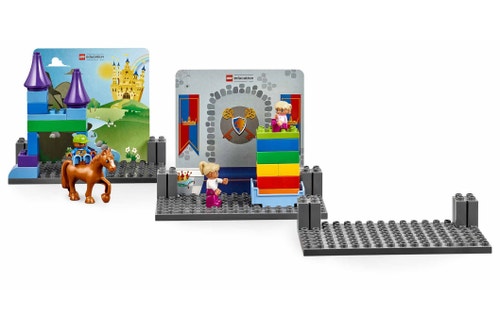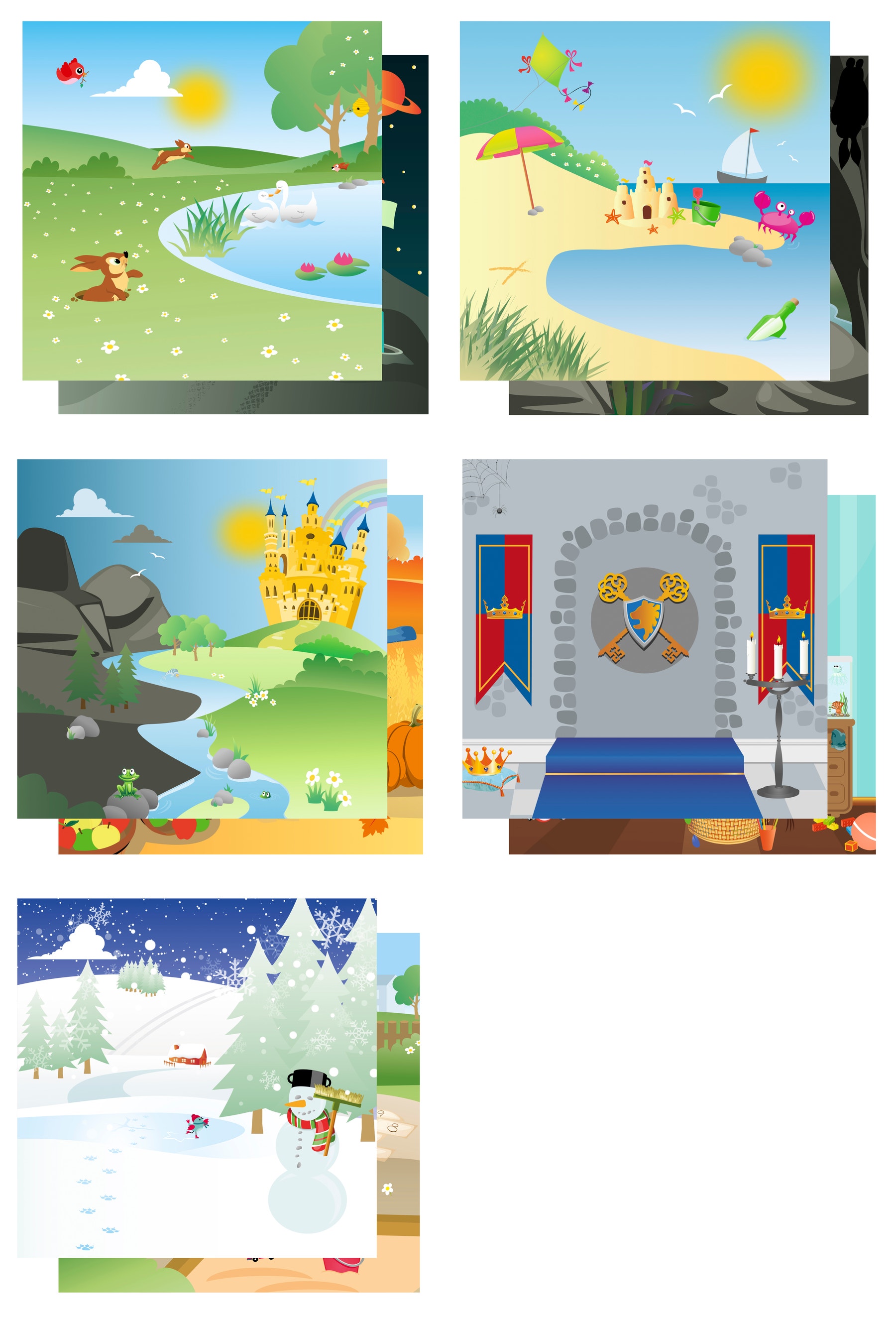StoryTales Set
The Princess and the Pea
Understand what makes a story and learn about sequence of events: beginning, middle, and end.
0-30 min
Principiante
Educación preeescolar

Connect
- Prompt a discussion about stories by explaining that some stories, such as fairytales, often involve something magical that cannot happen in real life.
- Ask the children to take turns naming different stories. If the children have trouble thinking of one, remind them of stories they have heard in class.
- Tell the children they are going to listen to a famous story called The Princess and the Pea (or substitute a different story that is more relevant to your class).
- After telling the story, discuss the story and ask the children to recall what happened.
Construct
- As a group, build the beginning of the story. Ask the children which background card is most like the setting at the beginning of the story. If the children cannot recall, reread parts of the story.

- As a group, build the middle of the story. Begin retelling the story using the beginning and middle scenes, but do not retell the end of the story.
- Discuss the end of the story and ask the children to recall what happened. Remove all the bricks from the first two scenes and ask the children to build the end of the story. Each child may use one building plate, stand, and background card for his or her scene. Printing out duplicate images from the appendix will make it possible for multiple children to use the same background card. Print the background images in “actual size” to ensure they fit in the stands. For younger children, consider building first as a group, then ask the children to try rebuilding the end of the story on their own.
Contemplate
When the children have finished building, encourage them to take turns sharing their end scenes. Have them use the figures to act out the scene. Consider asking questions like:
- Can you explain what happened at the end of the story? How did you show this in your scene?
- Did you like the ending of the story? Why or why not?
Continue
- Explain that many modern stories have endings that do not tell the audience everything they want to know. Tell the children that this is why authors of books and screenplays often write sequels, which continue the original story. Give some examples.
- Ask the children to consider what would happen in a sequel to The Princess and the Pea. (i.e., What would happen after the prince and princess married and put the pea in a museum?)
- Encourage the children to build one scene from the* The Princess and the Pea* sequel. Remind them that this story has not yet been told so they can use their imaginations and tell it however they would like.
Did you notice?
Observing the following competencies can help you monitor whether the children are developing language and literacy skills:
- Children are able to retell and reenact events from stories, songs, or rhymes.
- Children are able to understand fundamental narrative structure and elements.
Soporte para el profesor
Children will:
- Practice recalling and retelling the end of a story
- Learn about sequence of events: beginning, middle, and end
For up to 6 children.
- Children are able to retell and reenact events from stories, songs, or rhymes.
- Children are able to understand fundamental narrative structure and elements.